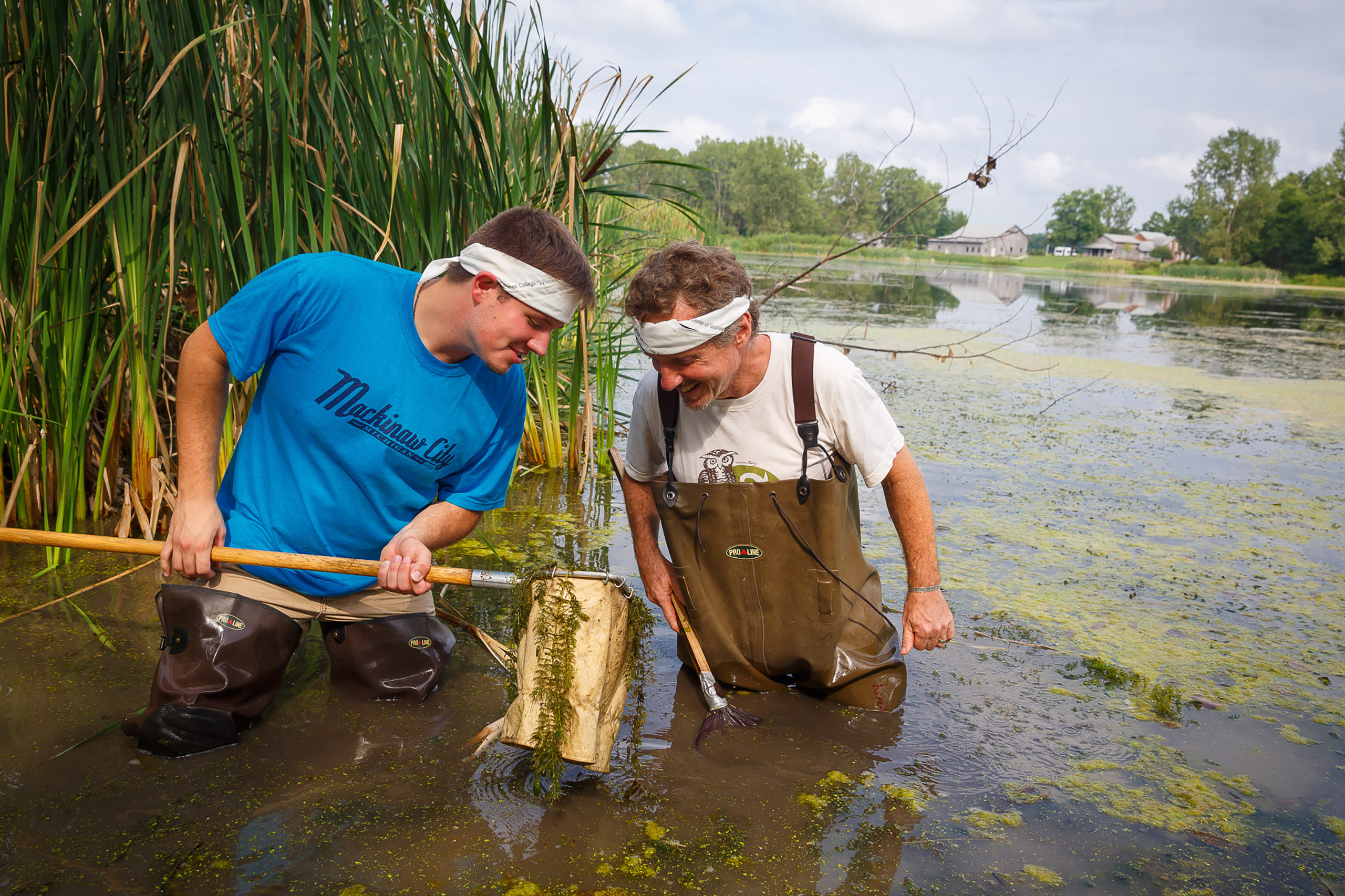Redefining community — what about our non-human neighbors?

In 2015, before I became Goshen College’s president, I was in front of Cornell’s College of Agriculture faculty, inviting them into community-engaged teaching practices, and offering resources to support that. A pugnacious plant biology professor asked:
“Does your definition of community apply only to human communities? Can we propose community-engaged learning in non-human ecological communities?”
By then, I knew better than to provoke a senior professor, especially one in another academic discipline. So I replied: “I’m not a plant scientist. I think that’s for you to say. Make your case.”
His question has stuck with me as we launch our new Center for Community Engagement here at GC. We sometimes explain the work this way:
“Field-based experiential learning with community partners is an instructional strategy. . . . These programs model the idea that giving something back to the community is an important college outcome, and that working with community partners is good preparation for citizenship, work and life.” (American Association of Colleges and Universities)
Let’s try out this variation:
“Field-based experiential learning with ecological communities is an instructional strategy. . . . These programs model the idea that giving something back to the ecological habitat is an important college outcome, and that working in partnership with the ecosystem is good preparation for citizenship, work, and life.”
What do you think? Does this ring true?
Earlier this month, a team of GC students from Professor of Economics Jerrell Ross Richer’s course, Sustainable Global Engagement, presented their research on the carbon costs of our Study-Service Term (SST) program and how we could respond ethically and creatively to that cost. This year’s team, Rachel Mast, Chino Saleh and Leah Kauffman, built on the work of two prior years’ student teams.
They proposed that our SST programs incorporate knowledge about sustainability and climate change, and the carbon costs of the programs globally and on a country-specific basis. They further recommend that sustainable practices be an explicit aspect of interactions with host families and become a part of preparing for SST, living abroad and coming home. They recommend planting trees in host communities or in Goshen as one carbon-offsetting action.
This is cutting edge work, and I love the fact that student teams are carrying this project forward now for three years running.
The ecologist Aldo Leopold wrote nearly a century ago:
“That land is a community is a basic concept of ecology, but that land is to be loved and respected is an extension of ethics. That land yields a cultural harvest is a fact long known, but latterly often forgotten.” (A Sand County Almanac, Preface to the Enlarged Edition written before his death in 1948.)
That land yields a cultural harvest is perhaps another way of affirming that working in relationship with the ecosystem is good preparation for citizenship, work and life.
One example of our global engaged learning is the Sustainability Leadership Semester at Merry Lea Environmental Learning Center. Emma Zuercher ’23 recently said about her experience in that program:
“I learned to see that community is not only inclusive of all people but much broader than the human world. My neighbor is the egret on the wetland, the bluestem grass in the prairie and the deer in the forest. All beings must be included in creating a world that supports us now and those who will live after us.”
If we are to save ourselves and our planet from the devastation we have wrought, it will require this redefinition of community — a truth understood by Indigenous people for centuries that we must all now learn and embrace.
Potawatomi author Robin Wall Kimmerer writes:
“We Americans are reluctant to learn a foreign language of our own species, let alone another species. But imagine the possibilities. Imagine the access we would have to different perspectives, the things we might see through other eyes, the wisdom that surrounds us. We don’t have to figure out everything by ourselves: there are intelligences other than our own, teachers all around us.”
So, who are the plants, animals and land in your community, and how are you in relationship with them? What are they teaching you?
Rebecca Stoltzfus




